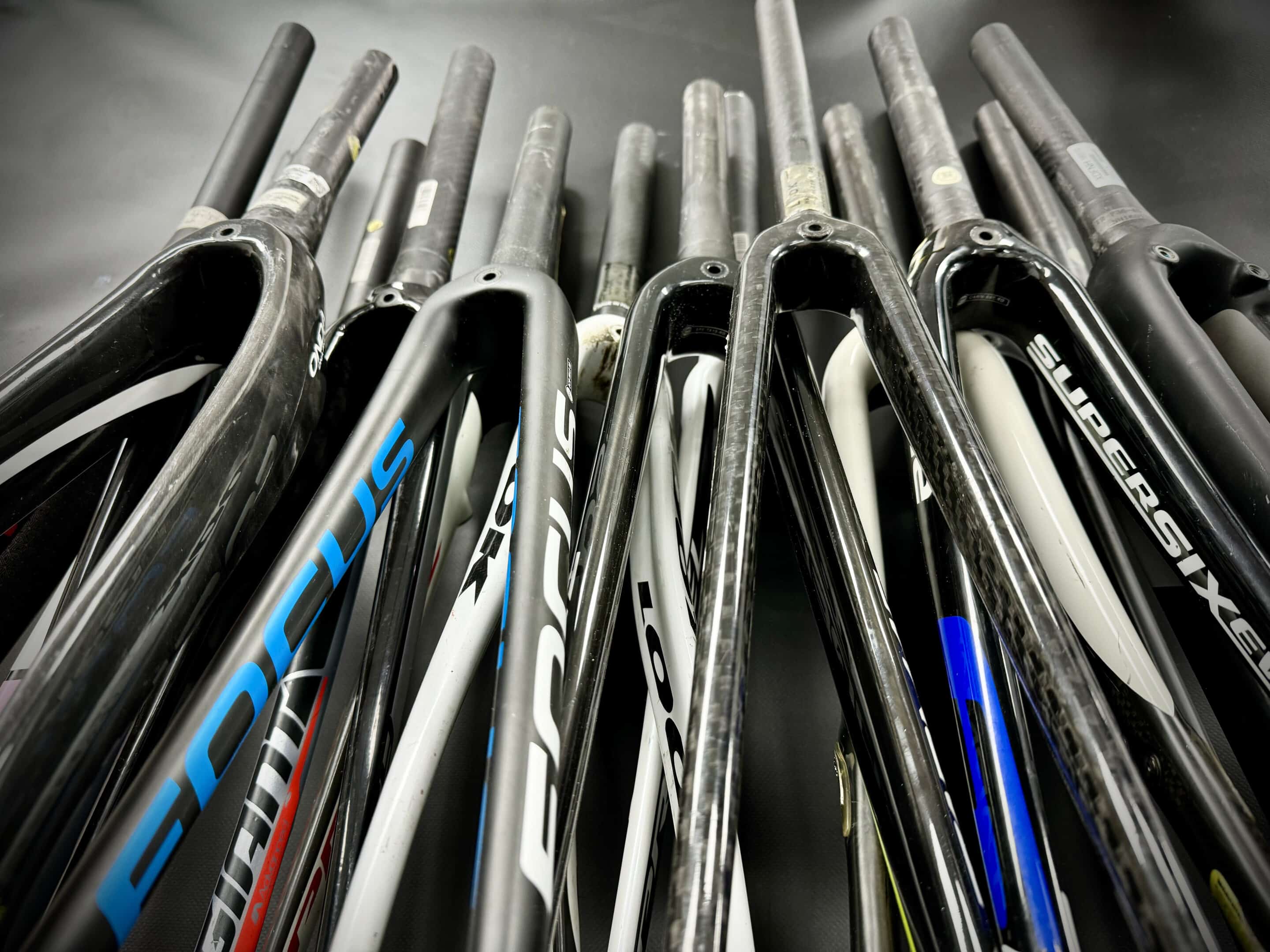What is the ‘Groove of Death’?
If we look at the development of carbon bike steerers since carbon forks were implemented into carbon bike frames, steerers used to be mild steel or alloy which was welded into the brake arch to lead down each side of the blade into a generous lug which accepted the carbon blades and the alloy dropouts to finish off the design.
These were heavy and also the bonding of the two materials caused alarming paint crack lines over time. However weight reduction and manufacture cost was the reason designs started to look at the challenge of a safe carbon crown race. Some models employed a rolled up steerer tube bonded into an alloy brake arch which partially saved some weight. Then the evolution converted the brake arch to a one piece with integrated carbon blades including a bonded in-roll of carbon tube to secure the base of the crown race.
All designers steered away from a complete one piece design until manufacture techniques advanced enough for some rather scary designs with big voids and air pockets. But to counter this they threw carbon at the problem which again made them relatively heavy still and the forks were quite chunky. Slowly over time they were able to exit air bladders out of the steerer for both fork blades to create the 1st true monocoque.

On the outset let me say for the record that carbon steerers as a concept are not dangerous. I am simply saying that these components are not necessarily best designed for carbon. As are dropouts, chainrings, BB’s, rim brakes, clinchers, carbon spokes, h/bars and stems, saddle rails or any parts which do not warn you that they are about to fail or indeed show you that they have!
So with that out of the way let us get on with referencing the title with some context – The steerer has probably the most important function on the whole bike. Why? Because there is only one of, meaning that if it were to fail there are no other parts associated which can save you should it fail. I refer in particular to the fork crown race. The further up the steerer you go the ‘safer.’
Did you know that the steerer is supposed to be the front suspension of the bike? Yes it is. In fact one of the reasons modern head tubes are fatter than vintage bikes is so the steerer can flex freely between the upper and lower bearings. Remember it is well known that the steel bike, without this frontal flex design, was just fine and rode very smoothly due to the properties of steel. Carbon is a very harsh ride compared to steel and therefore I assume this was a consideration in the evolution of the carbon bike.
There are also secondary functions designed into the steerer which you did not know, and this varies from brand to brand and even model to model, and that is its role in frontal impact failure.
In a frontal impact or other trauma such as potholes or heavy frontal braking or sudden direction change, the steerer should survive only to keep the front wheel from collapsing. Remember what I said earlier that the steerer is a one of part which did not go un-noticed by the designers, you would hope! In many trauma cases we have reviewed it is very clear that by far the best outcome of a frontal trauma failure is the implosion of the downtube/ head tube junction before the steerer fails. In some cases the design for failure is to break just below the upper bearing race which, although you loose steering, will allow enough give to absorb an impact without fracturing the head tube. It is my opinion that the former is a more popular design at the cost of the frame but not your jaw line.
So you understand, just like the seat tube is quite a complex design consideration which most are not aware of.
Congratulations if you did as it certainly is not obvious!

G.O.D plays a big part in my criticism of the carbon steerer. The ‘Groove-Of-Death’ is an over dramatic term we use for upper bearing wear. If you have ever pulled your steerer out or tried to tighten it because it ‘feels’ loose will have suffered this rather irritation inconvenience. The groove is formed as a result of carbon abrasion on the metal inner race of the upper bearing, something every bike designer should fight against having to implement regardless of cost. 90% of all repairs we do on forks is G.O.D.
Unfortunately not all G.O.D.’s can be repaired as it depends on the depth of the ring versus the thickness of the steerer wall.
In the future you should start to see these upper bands on the steerer containing an alloy ring. I have already seen a major brand addressing this with an additional band of what looks like more carbon possibly infused with kevlar. I despair.. This should be very easy fix so my sceptical mind wonders why this hasn’t been addressed thus far. You might come to your own conclusions.
That all said. We are more than happy to review your fork issue and hopefully this article gives some confidence of our knowledge on the subject.


